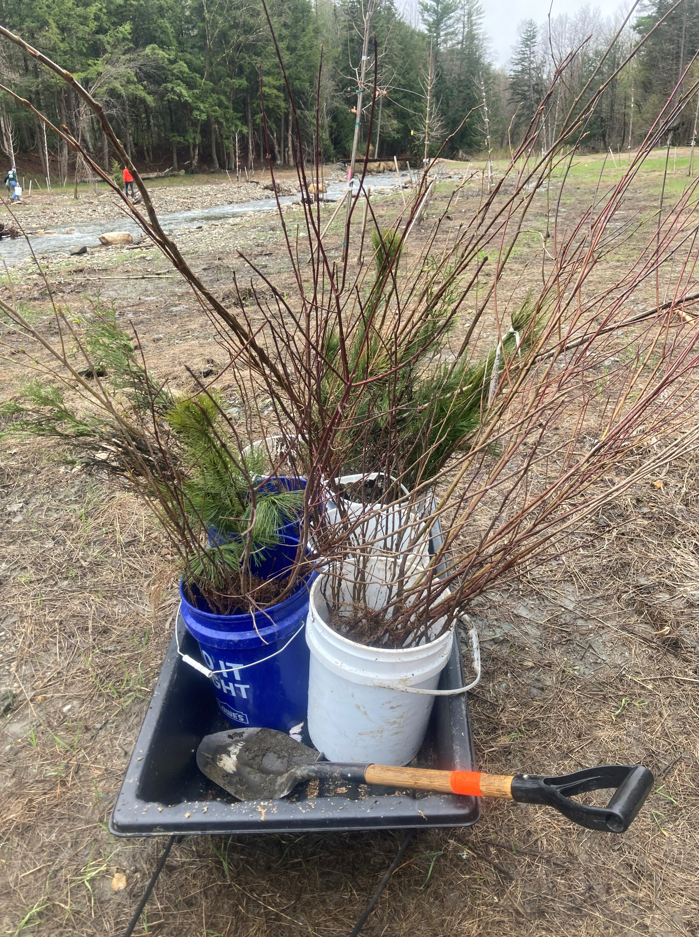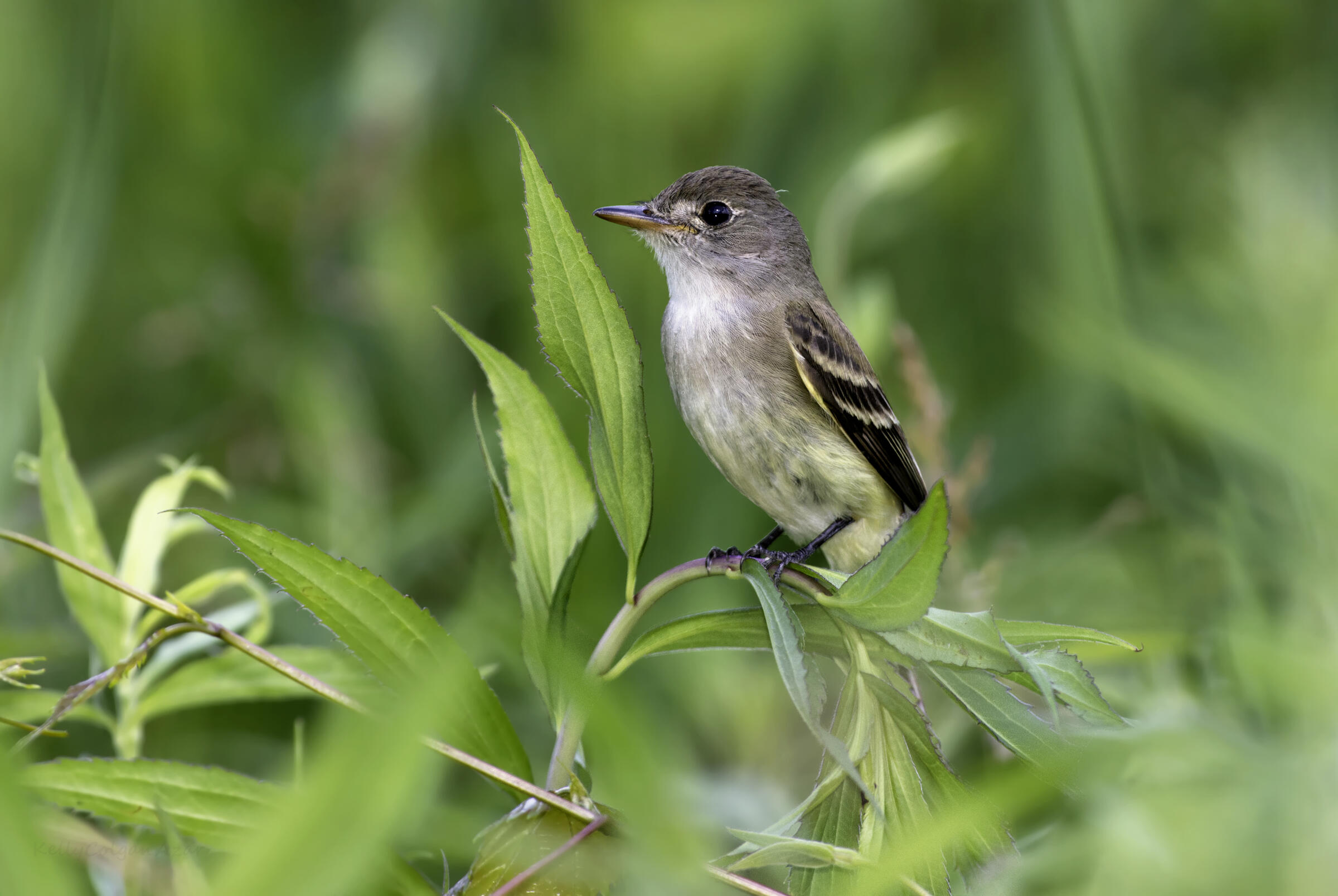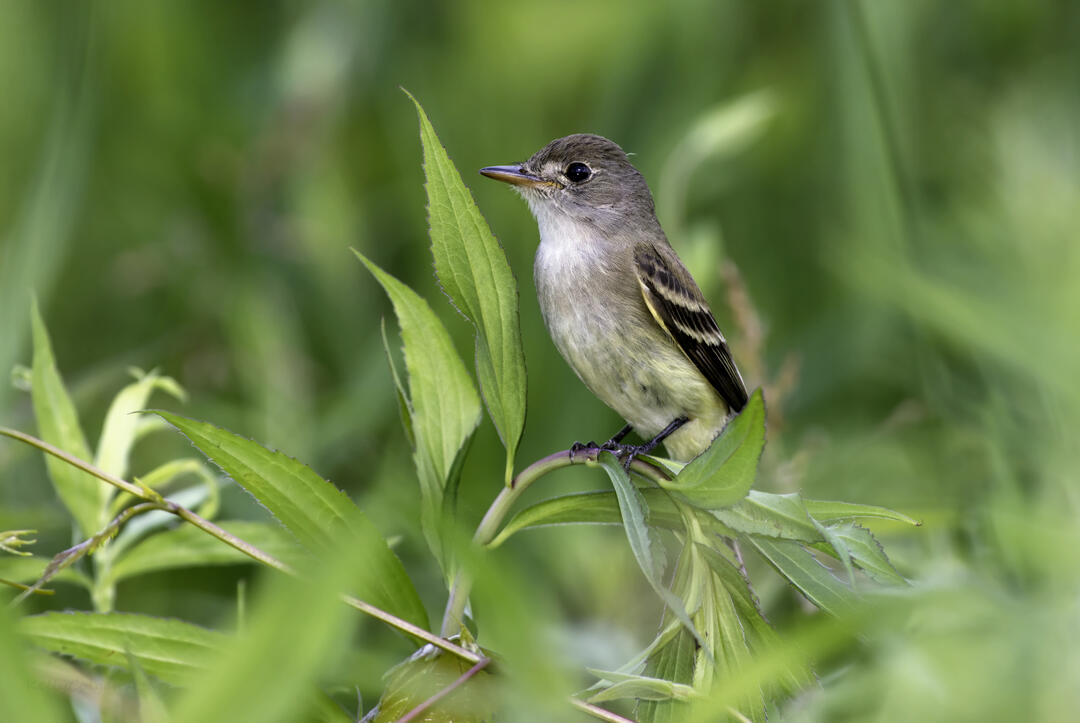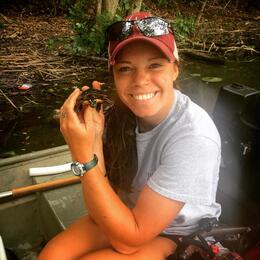Written by Conservation Research Fellow, Cassie Wolfanger. This fellowship is generously supported by Audubon Vermont and the Lake Champlain Sea Grant Institute.
Re-establishment of riparian forest buffers has become a common means to combat loss or damage in woodland areas next to streams, rivers, and wetlands. However, not all buffers are created equal and there are several bird-friendly considerations that are easy to incorporate into existing restoration plans that can help get the greatest biodiversity bang for your buck. You might wonder: What site preparation is needed? Which native plants that prefer wet areas are best for birds? How large does a buffer need to be to support most birds? How long after a planting can you expect to see a response in birds?
Because riparian areas reside at the land-water interface, they serve as essential terrestrial-aquatic energy linkages, in which the quality of habitat and food affects bird diet, fitness, and reproductive success. Flying insects, many of which have aquatic larval stages, can be up to twice as abundant in riparian buffers compared to bare shorelines (Whitaker et al. 1999). In addition to increased overall abundance of insects in riparian zones, the aquatic insects (i.e., those whose larvae mature in the water) found there have 4 to 34 times more omega-3 fatty acids than terrestrial insects, making aquatic insects nutritionally superior. This is particularly important for migratory species dependent on refuel during stopovers and for breeding birds feeding hungry chicks. The type and size of the water source (i.e., wetland, river, stream, lake, or pond), as well as the habitat characteristics within the riparian buffer (e.g., diversity of tree species, availability of nest and perch sites, flood frequency) can greatly affect which birds are found there. Species like the Northern Parula, and Alder, Least, and Great-crested Flycatchers are likely to be found only near streams with a thick understory of shrubs, whereas the Pileated Woodpecker can be found in nearly any type of mature riparian forest, as long as large trees are available for nest cavities. Among the earliest migrant warblers, the Louisiana Waterthrush nests right in the streambank and requires moving freshwater in clear, perennial streams in mature deciduous or mixed forests. In general, headwater streams have more neotropical migrants dependent on undisturbed forest and larger streams have more generalist birds that tolerate edges and disturbed habitat (Miller et al. 1997). While birds benefit from riparian buffers, they can contribute to the restoration process itself through seed dispersal (Ortega-Álvarez et al. 2012) and serving as bio-indicators of healthy functioning ecosystems in assessments of post-implementation success (Bryce and Hughes 2002; Ormerod and Tyler 1993).
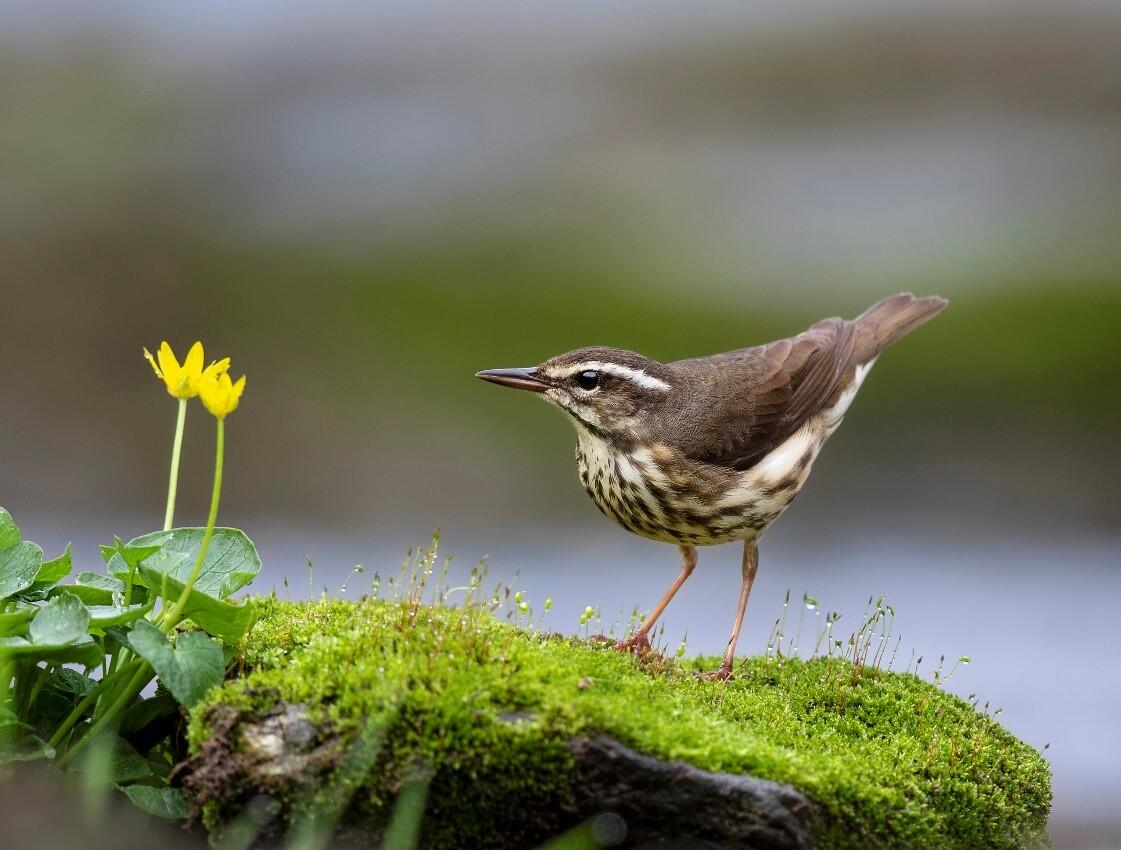
Removing Invasive Vegetation to Prepare Sites
The first step in riparian restoration is to control invasive vegetation since its presence and level of infestation impact the quantity and quality of food for birds. Non-native plants that have not co-evolved with native insect communities essentially become insect deserts, supporting up to 96% less caterpillar biomass than native vegetation (Richard et al. 2019). This is catastrophic given that 95% of terrestrial bird species rear their young on insects and need a lot of them (even if they eat seeds or fruits as adults). Black-capped Chickadees for example, need 6,000-9,000 caterpillars over 16-18 days to raise an average clutch to maturity (Tallamy 2017). The fruits of non-native vegetation are also poor in nutritional quality compared to native alternatives. Two aggressive invaders in Vermont—common buckthorn and bush honeysuckle—are particularly bad for birds. Common buckthorn fruits have a laxative property, which limits birds’ ability to absorb nutrients and spreads the seeds more rapidly. Berries produced by bush honeysuckle are too sugary and not fatty enough to sustain birds in long flights during migration.
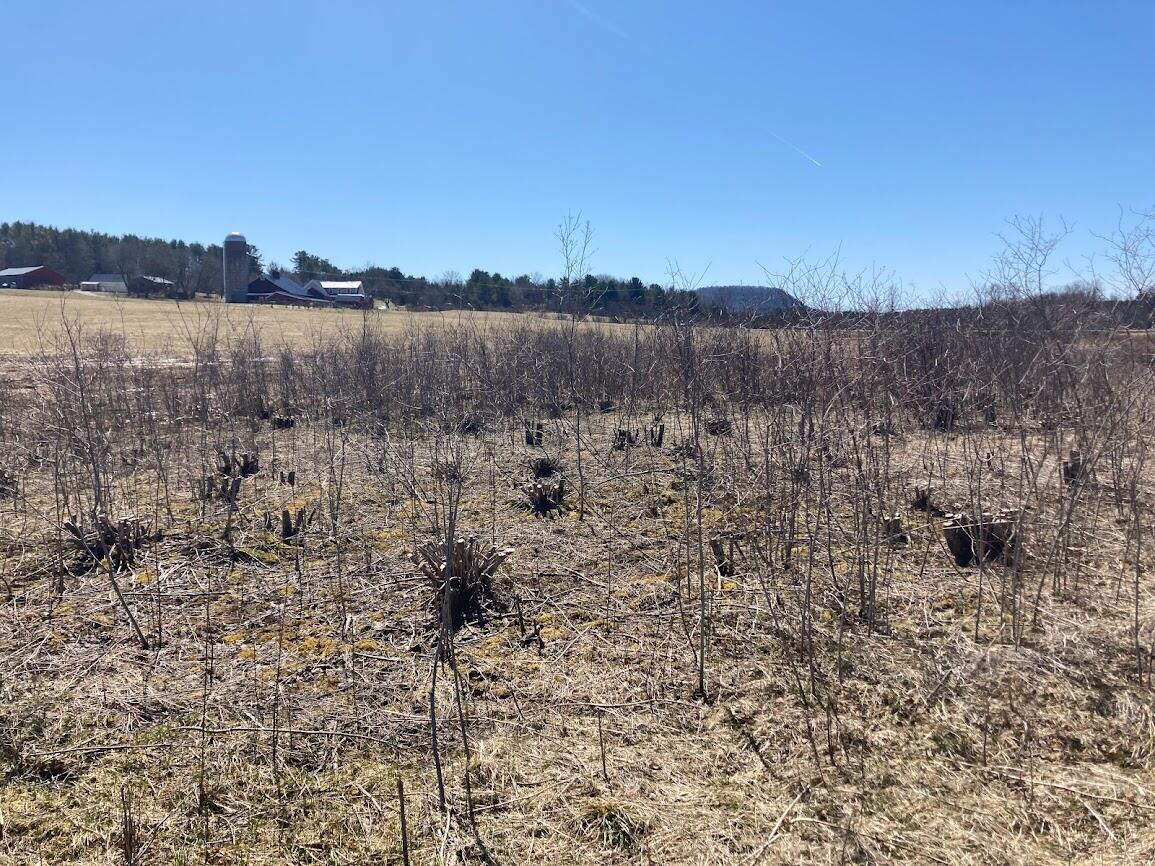
Native Plant Selection for Birds in Riparian Areas
Riparian buffers that replicate natural areas with diverse native species of mixed height and age classes contian the vertical structure and composition most beneficial for birds. But because not all native plants pack the same biodiversity value, meaning some support more diverse insect communities or better berries than others, we can be strategic about selecting “superstar” species to plant for restoration. The Quercus genus leads the flock on hosting over 500 species of caterpillars and Vermont has 11 native oak species. The Prunus genus—cherries, plums, etc.—is not far behind, supporting over 390 caterpillar species. Maples, yellow birch, sycamore, American elm, red cedar, and hackberry are also all great choices for fruit and seed production. For shrubs, native willows (pussy, silky, sandbar, wooly-headed, and black) host 370+ species of caterpillars. Dogwoods, especially silky or red-osier, that like their feet wet in riparian areas, produce excellent berries that ripen throughout the summer. Speckled alder also thrives in wet soils and their catkins provide early-season food. You can’t go wrong with other native berry shrubs such as elderberry, serviceberry, winterberry holly, bridal wreath spirea, and many in the Viburnum genus: highbush blueberry, highbush cranberry, or nannyberry.
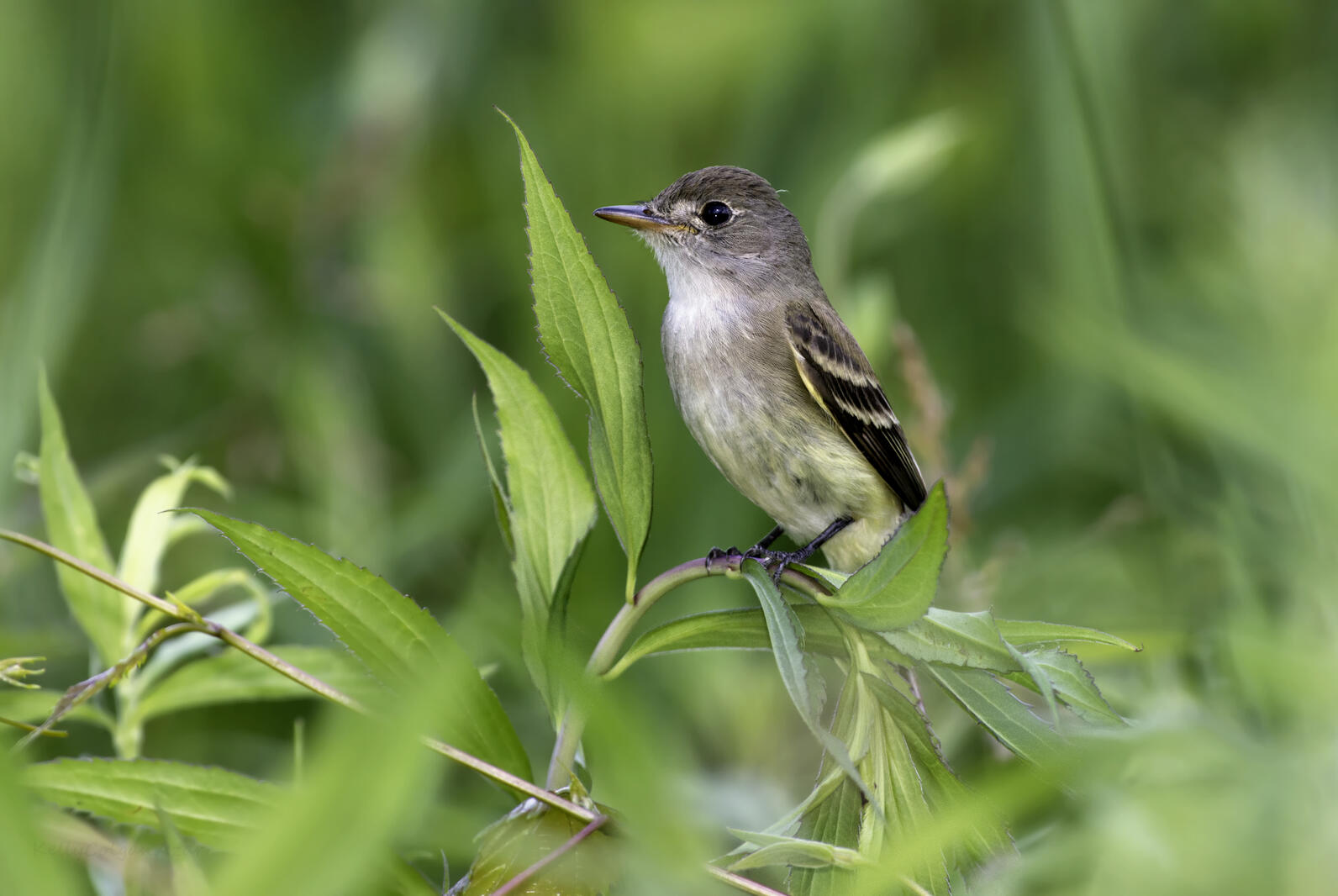
How wide should a buffer be to support birds?
Of course, the wider the buffer the more birds it likely supports, but what is a minimum width we can aim for to support most species? 10 – 30 meters might satisfy physical, chemical, and aquatic biological integrity of small streams, such as subsurface nutrient removal, sediment trapping, erosion protection, water temperature reduction, and macro-invertebrate and fish communities (Sweeny and Newbold 2014), but much wider buffers are usually needed for terrestrial habitat (Broadmeadow and Nisbet 2004). Birds that prefer edge habitat or transitional zones, such as the Northern Cardinal, Brown Thrasher, Gray Catbird, and Northern Mockingbird use almost any size buffer. Other species, such as the Scarlet Tanager, that are limited to large expanses of forested riparian habitat, may need buffers in excess of 150 meters wide. Species with intermediate requirements, such as the Hairy Woodpecker and Red-eyed Vireo, may be found somewhere in between, such as in smaller forested buffers of 50 meters. Spackman and Hughes (1995) suggests that a 150 meter buffer is recommended to include 90% of the total bird species they observed in 6 mid-order streams in Vermont. However, there is great variability in the literature on minimum recommended buffer widths for birds, meaning buffer width alone is a poor standard for restoration design (Fischer, 2000). More importantly, the rate of increased bird abundance after restoration has been shown as a function of the number of tree species planted (diversity), the number of trees planted per hectare (density), and the percent riparian forest within 500 meters (proximity and connection to existing intact habitat; Gardali and Holmes 2011).
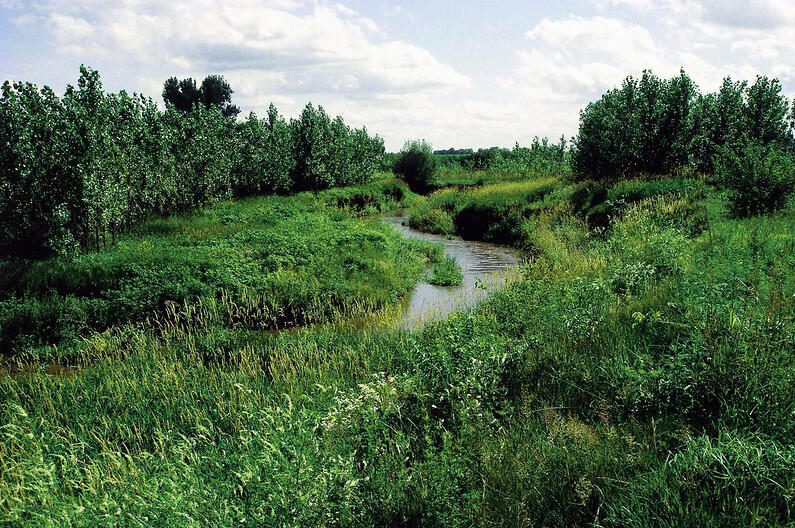
How long after a planting will birds come to use it?
It is hard not to be eager to know if our management efforts have been successful. All restored areas are providing habitat, but certain bird species might reflect successional stage. Just like young forests, there are pioneer bird species that come first, often dominating, then later colonizers will appear, increasing richness and diversity over time (Burges et al. 2010). Although each species has a different response rate to using regenerated habitat, an approximate expectation to see significant population increases in birds may hover around 15 years (Gardali and Holmes 2011). We must keep in mind that nature does not rush, but it does not rest. It often takes time, many years, to see a response in wildlife, but if we are strategic about species planted, site selection, and restoration scale when we build it, they might just come.
This article's content was presented as part of the Watershed Forestry Partnership 2022 Annual Practitioner's Meeting, with a recording available below for a session on biodiversity in riparian buffers. The video contains 3 presentations: 1) Natural Communities in Vermont, 2) Riparian Buffer Restoration with Birds in Mind, and 3) Pollinators in Riparian Areas.
For more information on riparian restoration from the Watershed Forestry Partnership at UVM Extension/Lake Champlain Sea Grant, be sure to visit their website by clicking here.
Literature cited:
Broadmeadow, S. and Nisbet, T.R. (2004). The effects of riparian forest management on the freshwater environment: a literature review of best management practices. Hydrology and Earth System Sciences 8(3), 286-305
Bryce, S.A. and Hughes, R.M. (2002). Development of a bird integrity index: Using bird assemblages as indicators of riparian condition. Environmental Management 30, 294-310.
Burges, S.A., Schulte-Moore, L.A., Isenhart, T.M., and Schultz, R.C. (2010). Bird species diversity in riparian buffers, row crop fields, and grazed pastures within agriculturally dominated watersheds. Agroforestry Systems 79(1), 97-110.
Fischer, R.A. (2000) Width of Riparian Zones for Birds. EMRRP Technical Notes Collection (TN EMRRP-SI), U.S. Army Corps of Engineers Research and Development Center, Vicksburg, MS.
Gardali, T. and Holmes, A.L. (2011). Maximizing benefits from riparian revegetation efforts: Local- and landscape-level determinants of avian response. Environmental Management 48, 28-37.
Manning, D., Sullivan, S., and Mažeika, P. (2021). Conservation across aquatic-terrestrial boundaries: Linking continental-scale water quality to emergent aquatic insects and declining aerial insectivorous birds. Frontiers in Ecology and Evolution 9.
Ormerod, S.J. and S.J. Tyler. (1993). Birds as indicators of changes in water quality, Birds as Monitors of Environmental Change. Edited by R.W. Furness and J.J.D. Greenwood. Published by Chapman and Hall, London. Chapter 5, pp 179-216.
Ortega-Álvarez, R. and Lindig-Cisneros, R. (2012). Feathering the scene: The effects of ecological restoration on birds and the role birds play in evaluating restoration outcomes. Ecological Restoration 30(2), 116-127.
Richard, M., Tallamy, D.W., and Mitchell, A.B. (2019). Introduced plants reduce species interactions. Biological Invasions 21:983-992.
Spackman, S.C. and Hughes, J.W. (1995). Assessment of minimum stream corridor width for biological conservation: species richness and distribution along mid-order streams in Vermont, USA> Biological Conservation 71: 325-332.
Sweeny, B.W. and J.D. Newbold. (2014). Streamside forest buffer width needed to protect water quality, habitat, and organisms: A literature review. Journal of the American Water Resources Association 50: 561-584.
Tallamy, D.W. (2017) Creating living landscapes: Why we need to increase plant/insect linkages in designed landscapes. HortTechnology 27 (4) 446-452.
Whitaker, D.M., Carroll, A.L., and Montevecchi, W.A. (1999). Elevated numbers of flying insects and insectivorous birds in buffer strips. Canadian Journal of Zoology 78:740-747.
